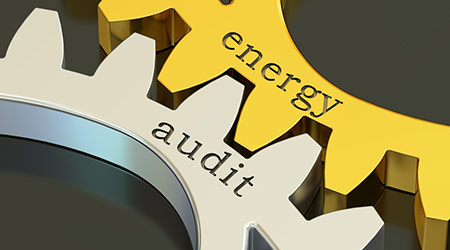An energy-efficient hospital audit is how the energy consumption of a healthcare institution is measured. The audit can help identify how energy conservation can be improved.
If you have never done one before or are looking for a way to streamline your energy auditing process, here are six simple tips to help you write up an audit report for an energy-efficient hospital.
1. Identify air leaks first
The first step to creating your audit report is identifying any air leaks in the building you are auditing. Drafts are hugely problematic and are one of the classic ways a hospital can go from being energy efficient to not being the one. Buildings can save up to 20% per year by sealing drafts, and they can pop up in the most unexpected places. Gaps along flooring, underneath doors and worn out seals in windows are all places where air can easily escape from a hospital and reduce its overall efficiency.
2. Review appliances & lighting
Second to air leaks, inefficient lighting and appliances are another major contributor to a hospital not being energy efficient. “Given the fact that lighting accounts for around 10% of a hospital’s energy bills, using energy efficient lighting can drastically reduce these. Next up, check general medical appliances that are used a lot and often left running constantly”, - explains Earl Allen, an Energy industry writer at Ukwritings and Paperfellows.
3. Write a hospital’s plan
After you have figured out where the hospital you are auditing is losing energy, you can make a basic action plan by asking yourself a few simple questions. These questions will enable you to write up your audit summary and overall audit report.
• How much money is being spent on energy?
• Where is energy being lost?
• How long would it take for the initial investment in energy efficiency to pay off for the hospital owner?
• Would making the hospital energy efficient provide additional benefits for the owner in addition to the money saving potential?
4. Summarize your findings
Your audit should consist of two parts: a concise summary and the detailed report. The concise summary should take no more than five minutes to read and give detailed facts about the findings of your audit. John Johnson, a Report writer at Boomessays says: “Your summary should get straight to the point: outline where and when your audit was conducted; the potential savings identified from the audit; and provide details of the hospital’s current utility bills”.
5. Start the detailed report
You will need to write up a detailed report which covers all the points and is easy to read. If writing is not your strong point, you may want to consider websites such as Academadvisor and State of Writing which provide grammar guides and information which can help you provide an accurate report.
In your detailed report, you should provide specific information about the hospital you carried out the audit on. This information should include details about the hospital’s overall square footage, the personnel residing within the hospital, the amount of energy currently being used by the building, any areas where energy is being wasted or lost, and information about anything else within the institution which uses energy. The report should provide details about the load demand of appliances and the potential savings which could be made by improving the hospital’s overall energy efficiency
Accounting forms, as you are probably aware, help track kilowatt usage and the energy which is used by each individual appliance. Energy accounting forms can help illustrate the demand which is being placed on energy by specific appliances or shortfalls in the hospital, such as drafts, and can help make decision makers come up with options for improving the hospital’s energy efficiency.
An energy-efficient hospital’s audit report needs to be completed when an institution's executives are looking to improve their building’s overall efficiency. An audit report is a vital part in determining where shortfalls in energy efficiency are most prominent and help an action plan be drawn up to improve the hospital’s energy efficiency.
Freddie Tubbs is a facility manager at Essayroo. He also writes guest columns at Eliteassignmenthelp and Australian Reviewer blogs.

 Building Sustainable Healthcare for an Aging Population
Building Sustainable Healthcare for an Aging Population Froedtert ThedaCare Announces Opening of ThedaCare Medical Center-Oshkosh
Froedtert ThedaCare Announces Opening of ThedaCare Medical Center-Oshkosh Touchmark Acquires The Hacienda at Georgetown Senior Living Facility
Touchmark Acquires The Hacienda at Georgetown Senior Living Facility Contaminants Under Foot: A Closer Look at Patient Room Floors
Contaminants Under Foot: A Closer Look at Patient Room Floors Power Outages Largely Driven by Extreme Weather Events
Power Outages Largely Driven by Extreme Weather Events